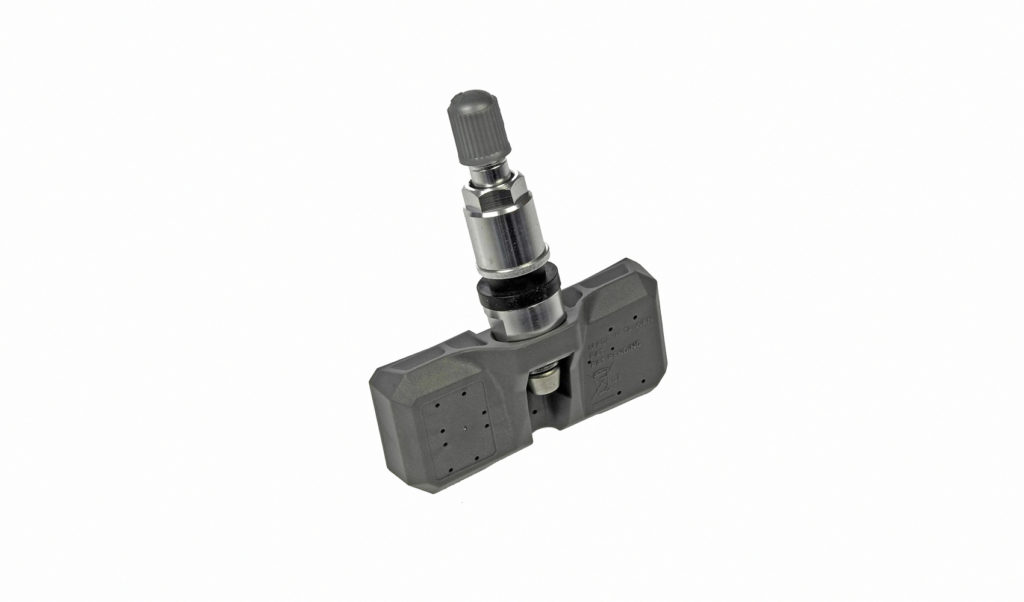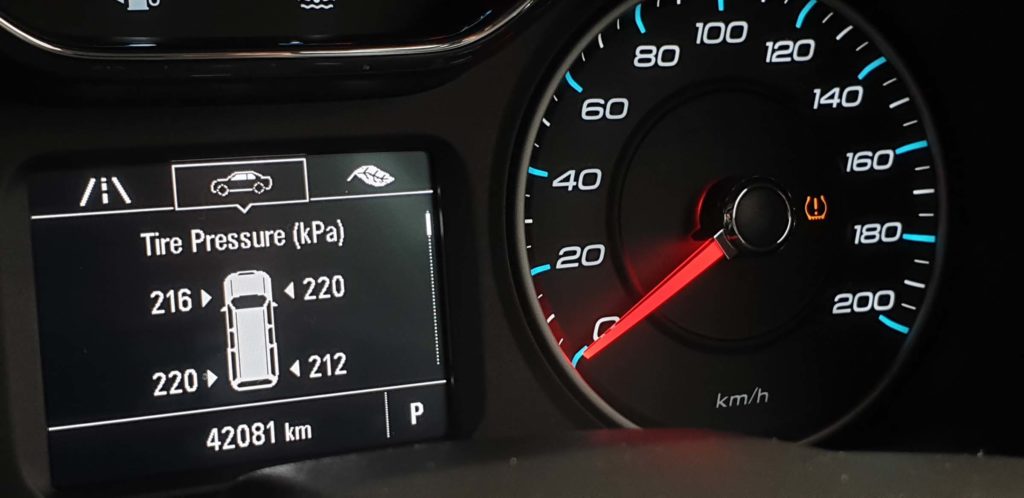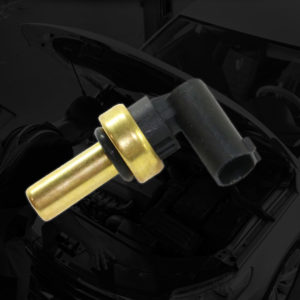You can’t go anywhere with your vehicle if it has flat tires, which is why you must pay attention to your tires’ condition. The great news is that modern vehicles have a tire pressure monitoring system (TPMS) that detects low tire pressure. The National Highway Traffic Administration (NHTSA) requires all vehicles manufactured from the year 2008 onwards to have this system installed. One of the most important parts of this system is the tire pressure monitoring system sensor. This tire sensor serves as the eyes of the TPMS.
How Much Does a TPMS Sensor Replacement Cost?
An aftermarket TPMS sensor replacement costs anywhere between $50 and $100. Some sensors can be priced higher, depending on their brand and specifications. Expect to pay around $60 to $70 for labor. You’ll also have to consider other expenses like taxes and related repairs. However, a good replacement tire sensor is worth the expense because it helps keep you safe on the road by warning you about potential tire problems that might lead to accidents.
What to Expect When Replacing TPMS Sensors
Once you take your ride to an auto repair or tire shop, mechanics will verify if your TPMS sensor is functioning as it should. They will replace the tire sensor if they find a problem.

If there are any faulty components in your TPMS system, they will repair or replace them. They’ll likely replace the sealing components of the sensor, such as the cap, core, grommet, and nuts.
After that, the mechanics will “relearn” or program the sensor to your vehicle’s computer. Then, they’ll double-check if your TPMS system is functioning as it should.
If you get TPMS sensors for your spare tire or special wheel assemblies (custom wheels, snow tires, etc.), you’ll need to relearn them to your vehicle’s computer. Once you’re done using them and you reinstall your original set of wheels, you’ll have to relearn their TPMS sensors again to ensure they’re working properly. Otherwise, the tire sensor might transmit the wrong signal.
What Is a TPMS Sensor?
The TPMS sensor monitors tire pressure inflation and transmits the data to the TPMS module using a radio frequency signal. It is usually powered by a 3-volt lithium ion battery.
How Does a TPMS Sensor Work?
A TPMS sensor transmits a signal once it detects that your vehicle’s speed is more than 20 mph.
When your vehicle isn’t moving, the sensor goes to “sleep mode,” though it will still transmit a signal to your ride’s computer every hour or every 6 hours. The exact time varies depending on the sensor.

Once the sensor detects a rapid change in inflation pressure, it’ll go on “alert mode.” That means the sensor will transmit a signal every second. The TPMS warning light will illuminate on your dashboard once the system detects that the tire pressure is low.
Types of TPMS Sensor
There are two types of direct tire pressure sensors on the market. Let’s look at each type in detail:
Valve Stem-Mounted Sensor
This type of sensor uses the valve stem as a transmitter and relies on a specific nickel-plated valve core to work. It doesn’t use conventional brass because it makes the device prone to moisture, thus increasing the chance of corrosion and damage.
Banded Sensor
Attached to the drop well of the wheel, the banded sensor is banded or clamped to keep it secured. Older banded sensors, such as those used for Corvettes (with run-flat tires), don’t need batteries to work. Modern banded sensors, on the other hand, require a battery to work.
Why Is Replacing a Bad TPMS Sensor Important?
A bad TPMS sensor can’t detect when the tire pressure is low. The faulty tire sensor will send either inaccurate or no signals that can mislead you about the state of your vehicle’s tires. Aside from increasing the risk of getting stuck on the road, here are other bad effects of driving with low tire pressure:
Reduced Fuel Economy
A flat tire has increased rolling resistance, which will push the engine to burn more fuel to keep your vehicle running.

Shortened Tire Service Life
Experts say that a tire pressure that’s 3 PSI below specification can decrease a tire’s lifespan by 10%.
Roadside Accidents
There are a lot of recorded accidents (both minor and major) related to low tire inflation. This is because low tire pressure can also reduce handling and brake efficiency.
What Causes a TPMS Sensor to Go Bad?
While TPMS sensors are durable, they’re not immune to wear and tear. The tire sensor will eventually fail, causing problems for you and your vehicle. Here are some of the things that can cause your tire pressure sensor to fail:
Low or Dead Batteries
Your TPMS sensor’s batteries can last from five to seven years. However, several factors can affect its lifespan, such as how often you use your vehicle and the road conditions in your area. A low or dead TPMS sensor battery can cause the device to malfunction.
Corrosion
The interior of your sensor’s valve stem can corrode due to dirt buildup and other factors. This can cause the TPMS sensor to stop working properly or completely fail.
Tire Change

Replacing your tires can sometimes damage your TPMS sensor. So if you don’t have the technical know-how to get the job done, it’s best to ask a professional to change your tires for you.
How to Know Which TPMS Sensor Is Bad
It’s important to catch a bad tire sensor as early as possible. Here are ways to detect a bad TPMS sensor:
TPMS Light Flashing
You can observe the TPMS light when you start your vehicle. It should illuminate along with other indicators. It’s normal for the light to remain illuminated for a moment before turning off.
If the TPMS light remains consistently on, it suggests a potential tire pressure problem. However, if the TPMS light starts flashing after the bulb check and continues to flash, it likely indicates a failing sensor.
If the TPMS light remains consistently on, it suggests a potential tire pressure problem.
–Anthony Harlin, ASE Certified Master Automobile Technician
TPMS Scan Tool
If you have a TPMS diagnostic tool, it’s easy to identify TPMS sensor issues. It can detect various problems, such as a drained battery and wiring problems.
Air Filling and Releasing
Fill each tire until it reaches its recommended tire pressure. Then, gently release air from each tire and monitor the car display panel. If you release pressure from one tire and it doesn’t trigger the system, it might mean that the sensor is defective.
Digital Pressure Gauge
Measure the air pressure of each tire and record them. Then, compare the data with the one displayed in your car display panel. If the reading in one tire is different from the one displayed, it might mean that there’s a problem with the TPMS sensor in that tire.
While these methods can help you diagnose a bad TPMS sensor, it’s still better to take your ride to an auto repair shop and let a mechanic do the diagnosis. Mechanics can rule out any underlying issue that may be causing a similar problem and check if the other parts of your tire system are working as they should.
Once you’ve found out that one of your TPMS sensors is faulty, have it replaced right away. There are many aftermarket sensors sold at unbeatable prices, so you won’t have a hard time finding one for your ride without breaking the bank.
Any information provided on this Website is for informational purposes only and is not intended to replace consultation with a professional mechanic. The accuracy and timeliness of the information may change from the time of publication.






























